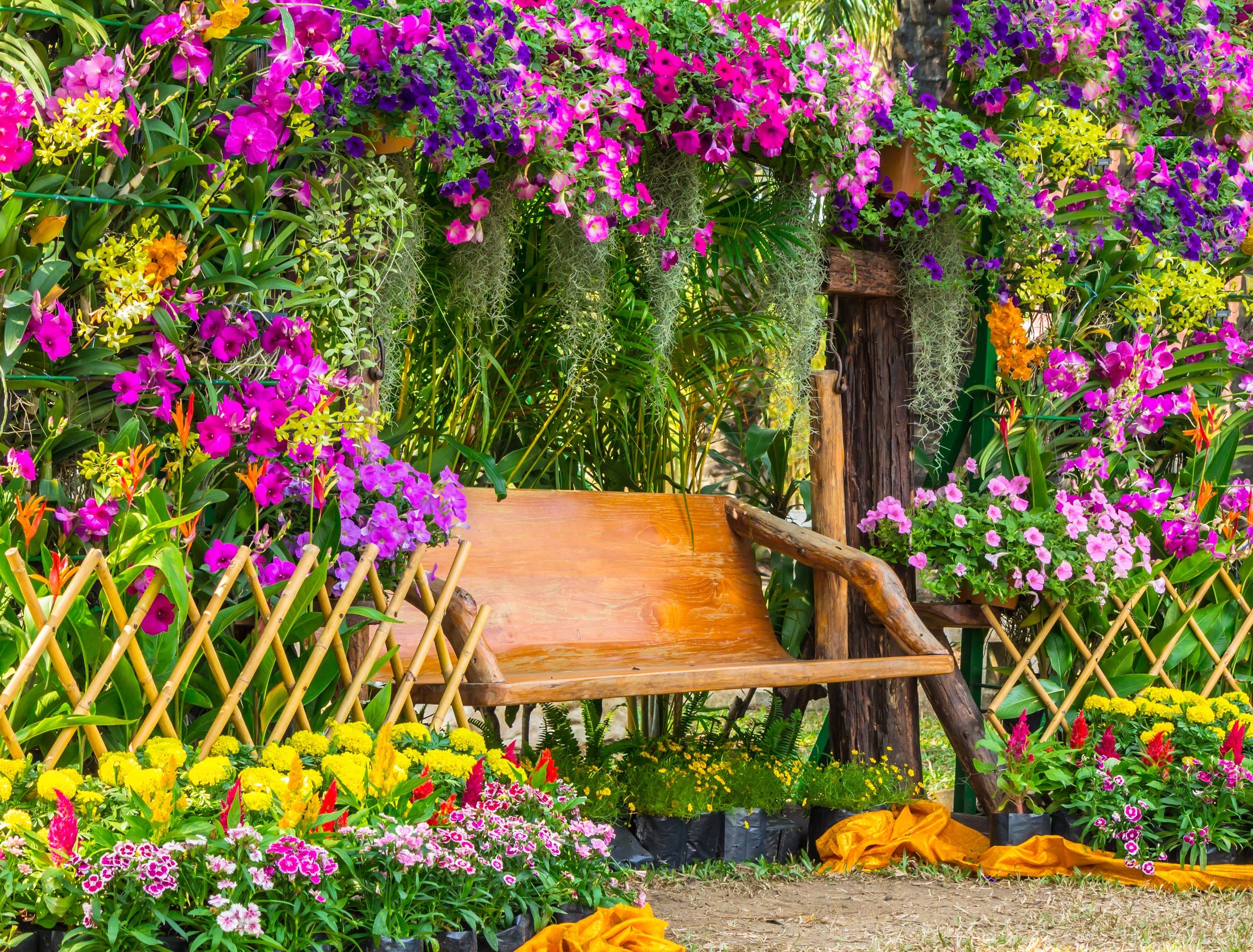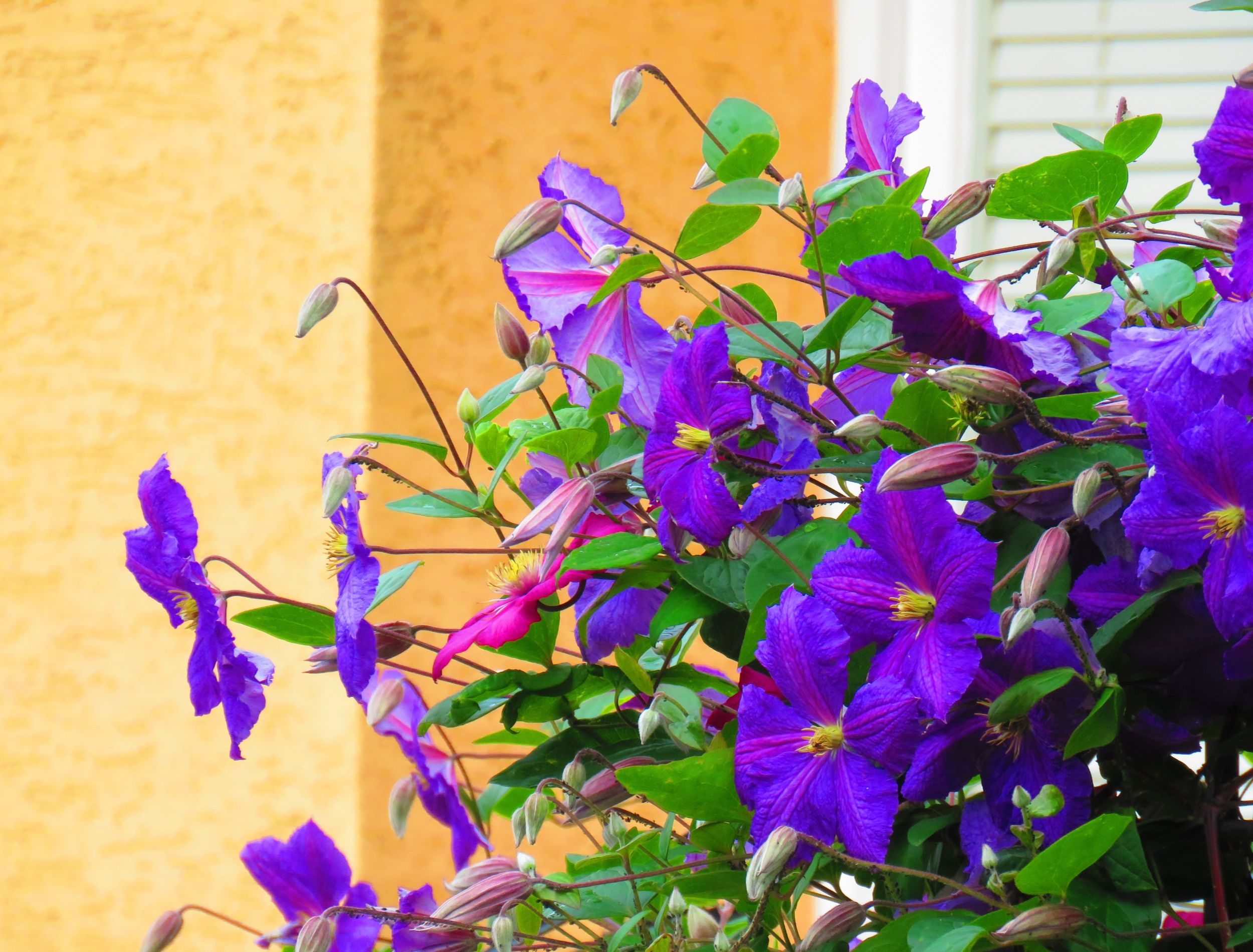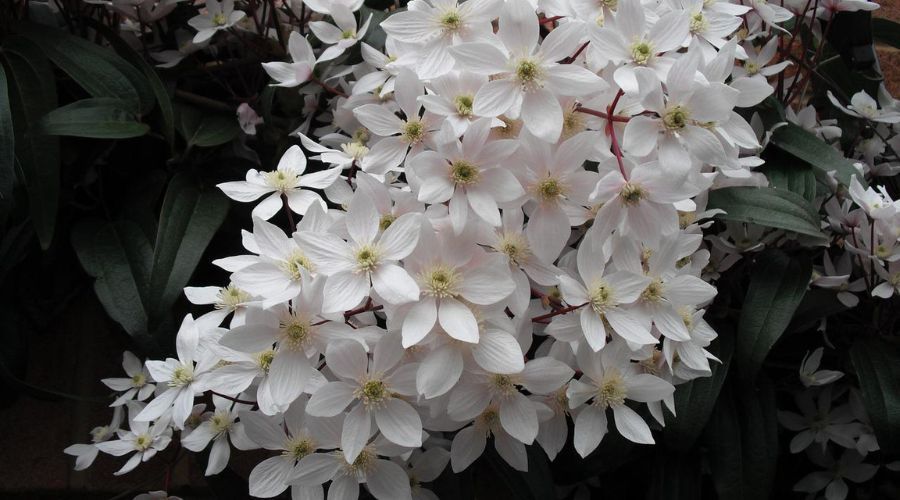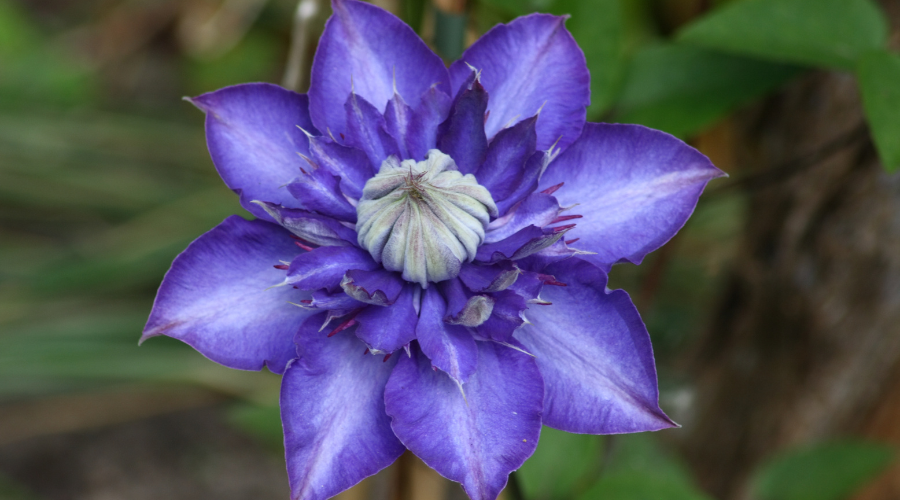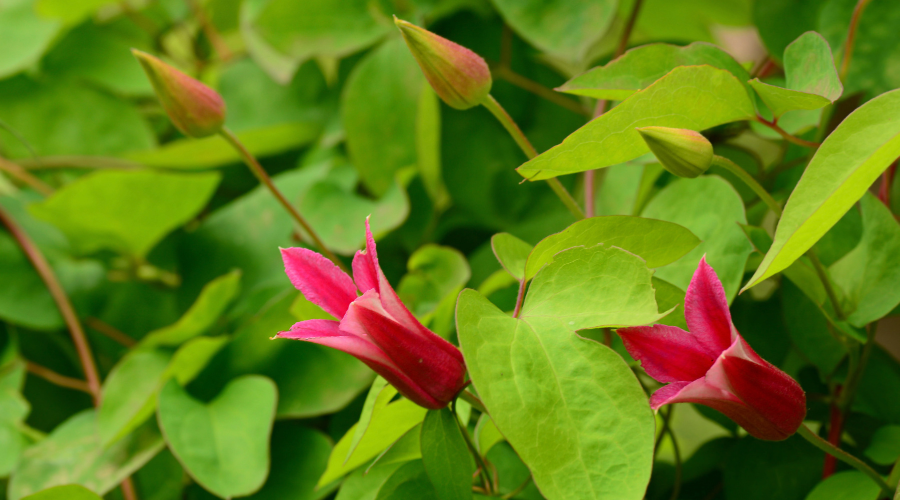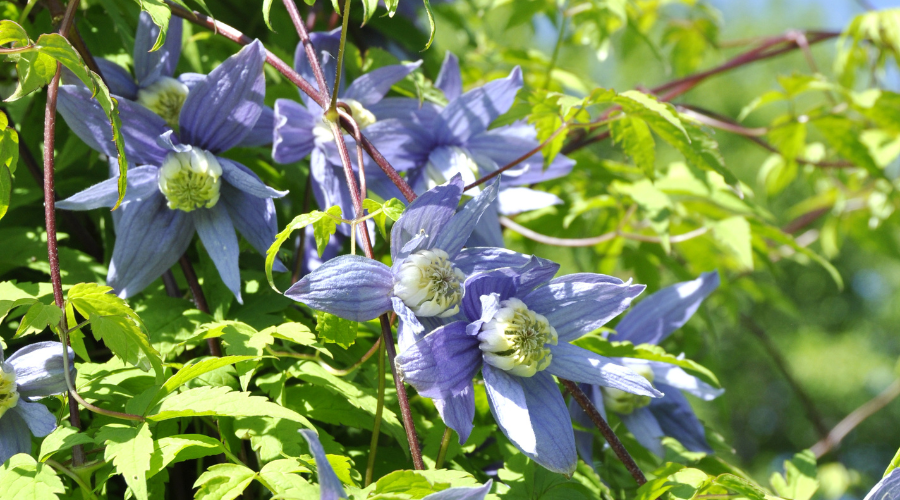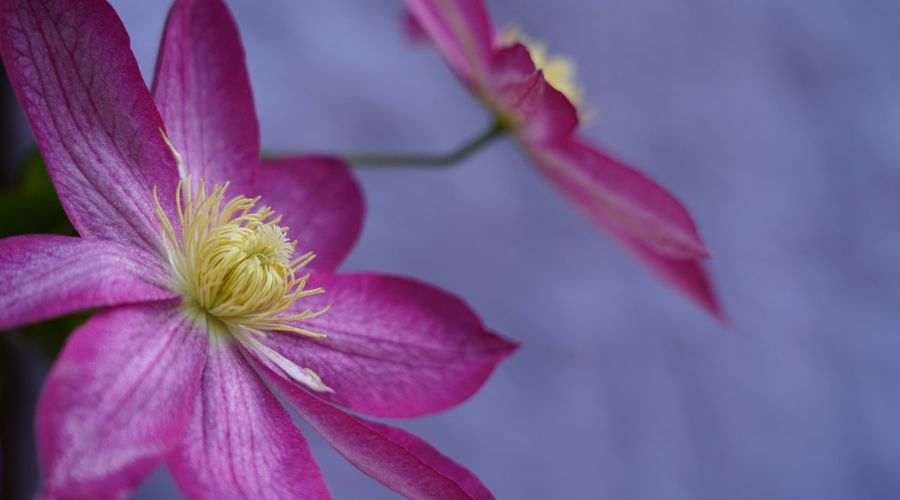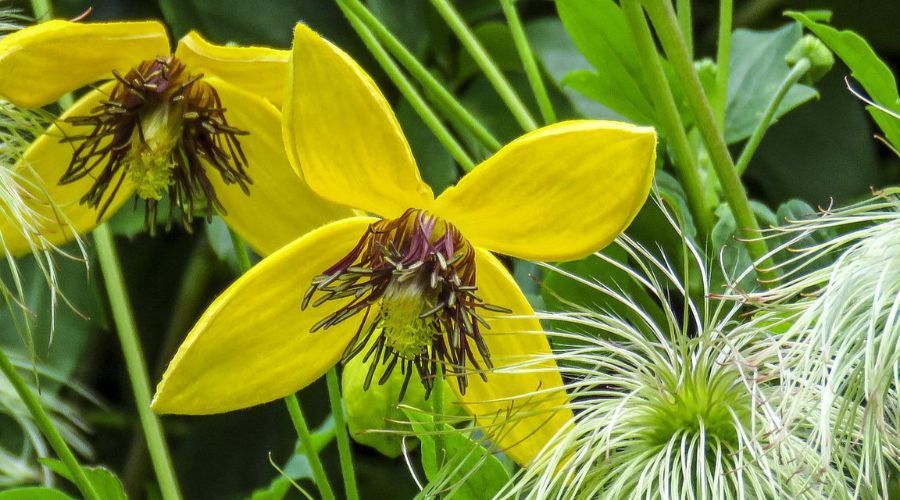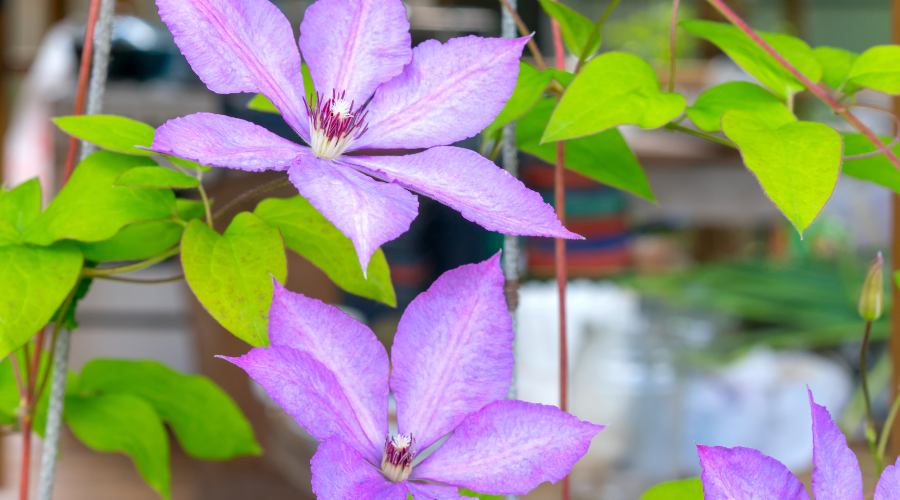A good tip for any gardener, novice or expert, is to add a variation of height and size to your garden. To accomplish height, you can opt for bushes or tall grasses, but another way is to grow vines upwards! So why not try a clematis?
The clematis is a hardy perennial that grows in long vines, blooming with flowers of all colors in various months throughout the year. When selecting a clematis vine for your garden, there are many types to choose from. Each clematis has unique flowers, stems, bloom times, and growing/pruning methods. Because each plant is so different, some clematis plants may be more suited to your climate or garden layout than others.
Take a look at these seven clematis vine varieties to add to your outdoor space. Add a clematis to create dimension in your garden and have a plant that brings beauty to your yard every year!
What You Need to Know About Clematis Varieties
Image credit: Przemyslaw Muszynski via Shutterstock
Clematis is a popular perennial that grows high and far when supported by a trellis, stake, archway, or fence. If nourished and cared for throughout their lifetime, most clematis vines grow up to 20 feet, and some varieties more than 40 feet!
Clematis plants do well in sunny spots but can survive in locations with half shade throughout the day. Areas with too much sun and high temperatures may cause the plant to suffer. Some clematis varieties are also happy to withstand a cold Winter, while others continue to grow year-round in locations with warmer Winter climates.
When pruning your clematis plant, it is important to know what type of clematis variety you own. Depending upon the variety, it will fall under one of three separate groups (called groups 1, 2, or 3) of trimming and pruning requirements. Each group has unique new growth locations and specific pruning methods that ensure the survival of the clematis variety.
7 Most Common Clematis Vine Varieties
Evergreen Clematis
Image credits: Pictures4you via Pixabay
The evergreen clematis stays green year-round! The plant produces clusters of small, dainty flowers in various shades of white, appearing as early as March or April. In areas with warmer Winter climates, some evergreen clematis' even bloom late into winter. This variety wraps itself around any structure using tendrils and can spread over 40 feet.
Herbaceous Clematis
Image credits: hadot via Canva
Unlike clematis varieties that climb upwards, this clematis does not. The herbaceous clematis does not have twining petioles (stalks that allow a twining ability to climb) and therefore is a variety better known for low ground cover. This type relies on resting its vines and leaves upon provided supports or other plants as it grows.
The herbaceous clematis blooms in the early Summer and flowers multiple times before dying in the Winter. In the following year, the plant grows from the ground up, restarting its trek and extending over your garden once again. The flowers on the herbaceous clematis come in shades of blue, purple, or pink and have unique curled petals.
Texensis Clematis
Image credits: 49pauly via Canva
Referred to as the ‘scarlet leather flower’, the Texensis Clematis is famous for its vibrant red colored flowers. Like the herbaceous clematis, the bell-shaped petals on this variety also have a twisted curl. The flowers on this clematis bloom from mid-summer until August. This type of clematis is part of group 3 - meaning they will all re-flower the following season.
In Winter, the flowers and stems die off and wither away (requiring hard pruning) until the following growing season, when it reappears. This clematis can be trained to climb and reaches up to nine feet!
Alpine Clematis
Image credits: HHelene via Canva
The alpine (or Alpina) clematis is known for its early blossoms that open up in early May. The flowers that bloom are bell-shaped with blue or violet petals that hang facing downwards - they are often described as ‘nodding’ by gardeners around the globe. The plant itself is an excellent climber and can make its way up any fence, trellis, or wall.
Viticella Clematis
Image credits: K_2_K via Pixabay
Clematis Viticella, an Italian plant known as ‘abundance,’ is a clematis variety that gardeners love! The plant is recognized for its wide-open stunning flowers that blossom in bunches of various shades of purple and pink. The flowers bloom from mid-summer to Autumn and require a hard pruning (group three pruning guidelines should be followed) at the end of each growing season to promote growth for the season to come.
Orientalis Clematis
Image credits: Brigitte Werner via Pixabay
What makes the Orientalis clematis stand out among the rest is that it is the only variety to produce golden flowers! The flowers hang very similarly to the alpine clematis, drooping downwards, but are unique in their yellow color. The clematis Orientalis blooms in mid-summer and continues to produce flowers until Autumn. This clematis is another variety that grows very quickly, climbing upwards/outwards to nine feet, making it a great selection for coverage along fences and homes.
Large-Flowered Clematis – Early and Late
Image credits: Oleg1824i via Canva
The large-flowered clematis is prized for its enormous open-faced blooms. Some of these flowers grow as large as eight inches! These clematises come in a wide array of colors, including pink, purple, red, and some with a combination of colors.
There are two different varieties within this clematis group: early and late, which identify what time of the year the plant blooms. Early large-flowered clematis' grow in late Spring, and late large-flowered clematis' grow in mid-summer.
Conclusion
Although only seven clematis varieties are listed above, there are over 300 different species and hybrids of this plant! Clematis vines have adapted and evolved to produce healthier plants, colorful flowers, or a plant you can enjoy every season.
When choosing your next clematis, determine what you want your garden to look like. Would you prefer the plant to stay low to the ground like the herbaceous clematis? Do you want bright pops of yellow flowers like the Orientalis clematis? Or are you craving large-sized blooms with shocking colors like the large-flowered early and late clematis plants? There are so many choices, you'll be sure to find one that fits your style.
Find the clematis vine variety that matches your climate and enjoy years of color in your yard! And as always, make sure to leave a comment down below!

